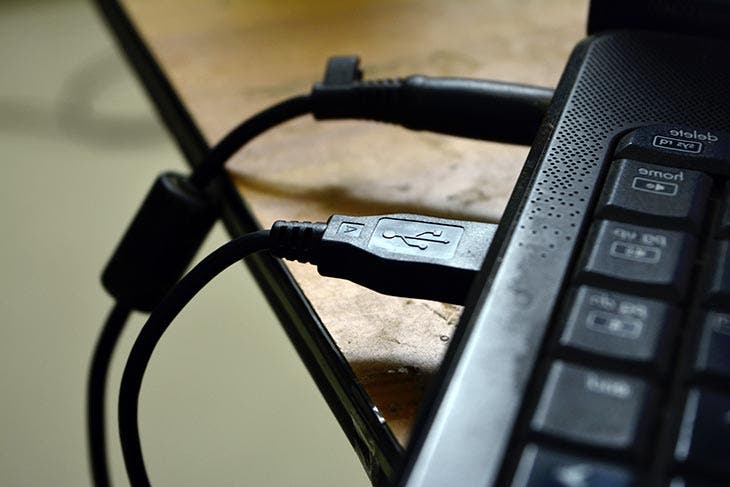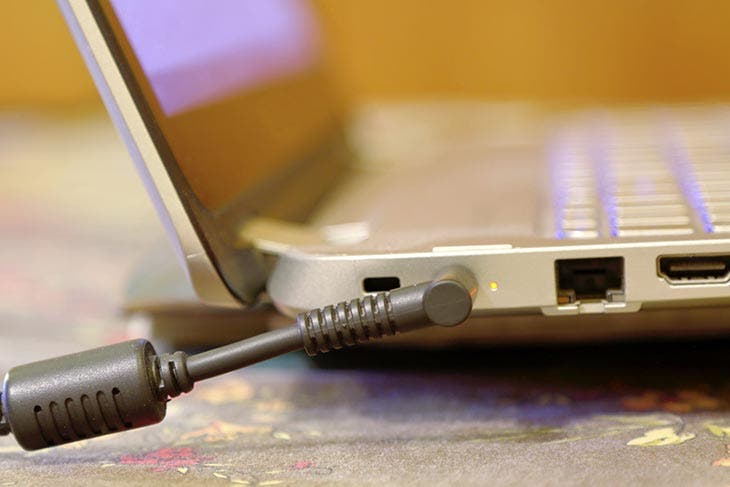So what is the use of the cylinder on the laptop charger?

Charging the laptop – Source: spm
All the little moving parts of your laptop like the hard drive, motherboard, video card and so many others, spin and vibrate with the ability to produce radio frequencies.
But, at the end of the power cable of your laptop, there is also a detail that is important: it is the cylinder that is also called “ferrite core”. It is used to avoid overvoltages and strong variations in the electrical current that passes through the cable. Namely that each metal wire can potentially be an antenna, since it ends up absorbing and emitting radiation due to the passage of electricity. Therefore, the ferrite block will thus attenuate certain parasites by reducing electromagnetic noise.
Can we do without this cylinder on the cable?

The plugged in charger – Source: spm
Without the cylinder in the laptop cable and other electronic devices (like your smartphone or even your camera’s USB cable), the radiation emitted by the wires could cause interference in your computer screen itself, for example. It can also be perceived as noise on the speakers, when you hold your mobile phone nearby.
What’s interesting is that there is no cutting-edge technology inside this cylinder on the cable. In reality, it is the ferrite coating itself that plays an important role: it is actually a kind of mediator, aligning the radiation in different directions, so as to avoid all kinds of interference that arise from the devices in the vicinity. Concretely, this room will capture the noise and transform it into heat. Thus, the closer the cable cylinder is to the source, the more effective its mission will be!
What you need to understand is that the cylinder on your computer cable is an inexpensive and very simple way to manage the proximity of different electronic devices that are working at the same time. It prevents you from any possible degradation of the performance of your laptop.
Good to know : By cutting the plastic that covers a ferrite core, you will find another metal cylinder inside. This room absorbs and releases any type of radiation while the current continues to flow inside.





